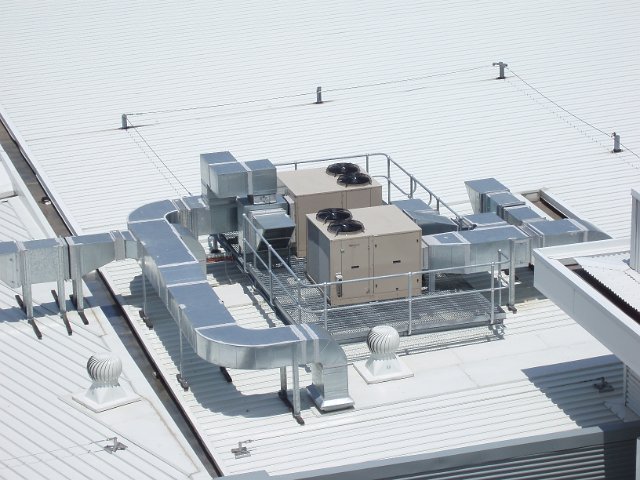Modifying HVAC Systems to Reduce SARS-CoV-2 Transmission

Aerosol transmission has emerged as a viable COVID-19 infection mechanism – very small particles carrying the virus – emitted by infected people breathing – hanging in the air possibly for hours – being pushed around by air flows in rooms – potentially being drawn into recirculating HVAC systems – possibly being reintroduced into occupied areas.
How can HVAC systems be modified to reduce the likelihood of SARS-CoV-2 virus transmission?
In deciding what to do it is important to think about the infection mechanism, what is known and what is not yet certain.
- There is still much to discover and understand about aerosol transmission of SARS-CoV-2.
- There is not yet a clear and accepted method for measuring the effectiveness of a HVAC system in mitigating the transmission of SARS-CoV-2.
- Every building and its HVAC system is different, both in its design and operational state
There are things that can be done with commercial built-up HVAC systems in both the base building system and in tenancy fit outs that will improve their role in mitigating the transmission of the virus. In this it is also important to remember that anything done with the HVAC system to provide a healthier indoor environment is generally a positive outcome for occupants.
There are a number of useful initiatives that can be considered to assure and/or improve the ability of HVAC systems to assist in the mitigation of viral transmission:
- Increase the dilution and removal of infectious aerosols via appropriate ventilation rates and outside air rates. Audit ventilation rates and airflow patterns and pathways, are they as designed/commissioned? Can they be improved? Can outside air rates be increased in practice?
- Good or improved air filtration to remove particles in a recirculating system. A minimum filtration standard of MERV13 (F7) is recommended. Should an alternative high efficiency filtration system be considered? What will the effect be on fan suitability and system design?
- Treat the air to inactivate the virus, or to help remove particles. Is this a useful strategy for this system?
- Manage indoor humidity levels to reduce the formation of aerosols. What are the options?
- Provide proper maintenance together with appropriate testing and reporting to support accurate and valued communication to occupants.
Many of these initiatives will also increase energy usage and affect building energy and potentially water ratings. Likely implications should be determined ahead of changes along with other efficiency measures that can balance these negative effects.
The best approach for a setting will depend very much on the design and operation of the particular building, its systems and its occupancy. An audit of current conditions and a well-informed approach can deliver high value improvements whilst minimising any effects on energy or water usage.
